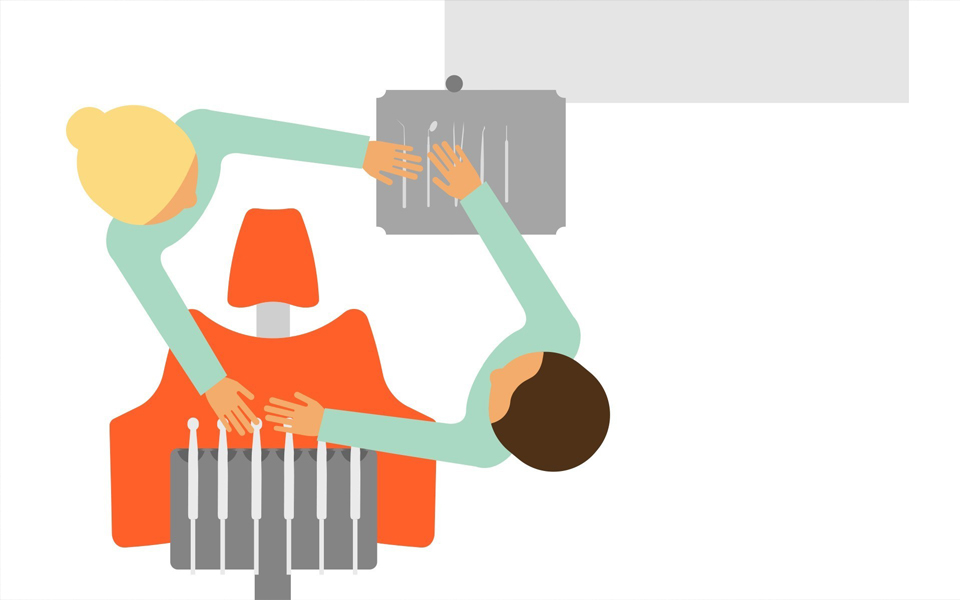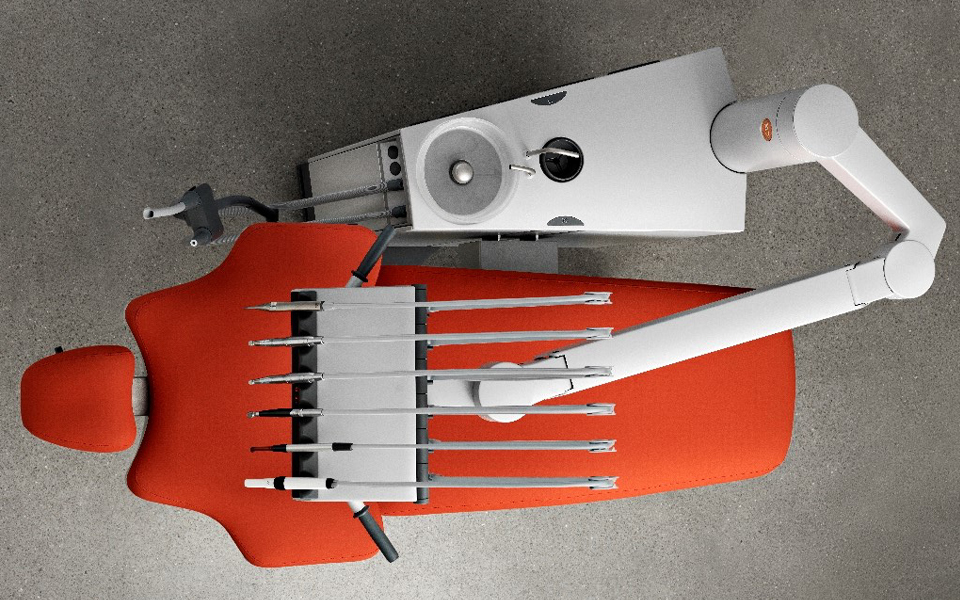In Germany, approximately 88.2% of dentists work according to Basic Concept 1. This means that the dental unit is placed to the right of the patient chair and is moved horizontally (mobile or swivel arm). The dentist reaches right for the hose-connected instruments, forward to the sliding table and left for the cabinet. The assistance unit is placed to the left of the patient chair, and is partially or completely moved in a horizontal direction (hinged or parallel to the chair axis). The assistant reaches left for the suction cannula and the multifunction syringe, forward to the sliding table and right for the cabinet. If necessary, he/she must change the suction cannula from the left to the right hand. With this treatment concept, the dentist and assistant must engage in several rotating movements to reach for the instruments.
In Scandinavia, dentists prefer Basic Concept 3, which is used by approximately 8.7% of dentists in Germany. Here, the units for the dentist and assistant can swivel from the left side and over the patient, which ensures a relatively short reaching distance. The dentist reaches for the hose-connected instruments to the right, the assistant reaches to the left. The sliding table is located behind the patient’s head. These positions require very few stressful torsional movements of the spine during the treatment on the patient.
XO CARE’s treatment units are designed with this basic concept in mind. With the XO unit, the instrument tray is placed over the patient’s chest, so the dentist and assistant have short reaching distances and can concentrate without looking away from the oral cavity of the patient. What’s more, thanks to this treatment concept, dentists can work very well on their own. This is not only cost-efficient for the practice, but it ensures a very quiet and relaxed atmosphere for the patient. An additional advantage of XO CARE’s dental units is the easy conversion for left-handed professionals. Only the multifunction syringe and suction hose holder have to be moved from the left to the right side. The sleek design of the unit means that an ample amount of space is available on both sides.
In general, for both everyday life and the workplace, it’s recommended that you pay attention to your posture as often as possible. If you do this, postural defects will either never become a problem or will be counteracted at an early stage.
[1] Rohmert W. Mainzer J, Zipp P (1986) The dentist in the context of ergonomics – an analysis of dental working postures. Research Institute for Dental Care. Deutscher Ärzte-Verlag, Cologne
[2] Micheelis W (1984) Characteristics of dental workload: results of a questionnaire study. Deutscher Ärzte-Verlag, Cologne
[3] Wilke HJ, Neef P, Caimi M et al (1999) New in vivo measurements of pressures in the intervertebral disc in daily life. Spine (Phila Pa 1976) 24(8):755–762
[4] Depreciation tables for the “healthcare“ industry, taken from: http://www.bundesfinanzministerium.de/Content/DE/Standardartikel/Themen/Steuern/Weitere_Steuerthemen/Betriebspruefung/AfA-Tabellen/1995-01-13-afa-3.pdf?__blob=publicationFile&v=1 am 12.07.2018
[5] Kimmel K (2001) Dental practice and work design. Deutscher Ärzte-Verlag, Cologne
[6] Hilger M (1999) Ergonomics in the dental professional practice – a survey. Thesis, Faculty of Medicine, Cologne.


